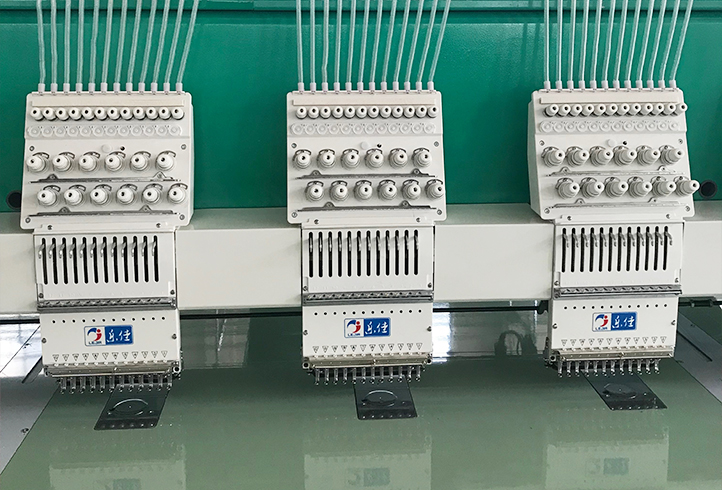Summary:
Driven by strong demand, the computerized embroidery machine control system, which is the core component of the compu...
Driven by strong demand, the computerized embroidery machine control system, which is the core component of the computerized embroidery machine, has also entered a rapid development cycle. Many related product brands have emerged at home and abroad, and the products on the market can be selected by computerized embroidery machine manufacturers. Also a lot. However, since the computerized embroidery machine is a mechatronic product, which is different from the previous purely mechanical products, computerized embroidery machine manufacturers should consider more issues when selecting the control system for product design and product matching, in addition to the quality of the control system itself. Consideration of the control system must also consider the compatibility of the control system with other components, electromechanical coordination and other issues.
Electromechanical coordination
Because the computer control system is designed and applied according to some specific computer embroidery machine models, it is difficult for the computer embroidery machine electric control system to adapt to all the changing mechanical structure control requirements of the whole machine. Users must make clear requirements when ordering.
Peripheral matching
Computerized embroidery machine is a computer system that drives the movement of embroidery machinery by controlling the actions of peripheral actuators (such as motors, electromagnets, etc.). Therefore, the matching relationship between machinery and electricity directly affects the performance and functional indicators of the computerized embroidery machine.
1. Embroidery frame and driving stepper motor
The weight and inertia of the embroidery frame should match the output torque and torque-frequency characteristics of the stepping motor. The various indicators of the motor are far greater than the demand of the embroidery frame driven by it, which will cause waste and unnecessary increase in volume. Conversely, if the driving force of the stepping motor is insufficient, it will cause problems such as pattern movement, motor overheating, increased noise, and reduced lifespan. Therefore, when the user selects a stepping motor to drive the embroidery frame, he should choose a suitable motor according to the size, weight, and characteristics of the transmission mechanism of the embroidery frame.
2. Spindle mechanical system and spindle drive motor
The transmission load of the spindle mechanical system should match the output power of the spindle drive motor. The output power of the spindle motor is smaller than the load of the spindle drive, which will directly affect the parking accuracy, running stability and embroidery effect of the whole machine. Therefore, when the user selects the type of spindle motor (such as servo, slip, variable frequency motor), the output power of the motor, and the drive inertia of the motor, it is required to fully analyze the transmission characteristics of the spindle system, and estimate the drive inertia of the spindle drive system. The maximum load Torque, with a certain margin, select the appropriate spindle motor.
3. Color changing motor and color changing mechanism
The type and parameters of the color-changing motor should match the type and load of the color-changing mechanism (the centralized hooking of the motor also belongs to this category). For the color change of the AC motor, AC motors with different powers and output torques (different transmission ratios) should be selected according to the number of heads of the complete machine and the number of needles of the needle bar box. For the models with 1-2 heads that use stepping color change, generally due to the limited installation position, 42 hybrid stepping motors are often used, which puts high requirements on the mechanical transmission, and the load should not be too heavy, otherwise it will Can not work normally.
In terms of purchasing peripheral parameters
Various types of electrical components are described by various parameters. Therefore, when selecting a model, it is necessary to carefully confirm whether the model and parameters of the selected product match the mechanical design. Otherwise it will not be able to meet the requirements of use very well.


